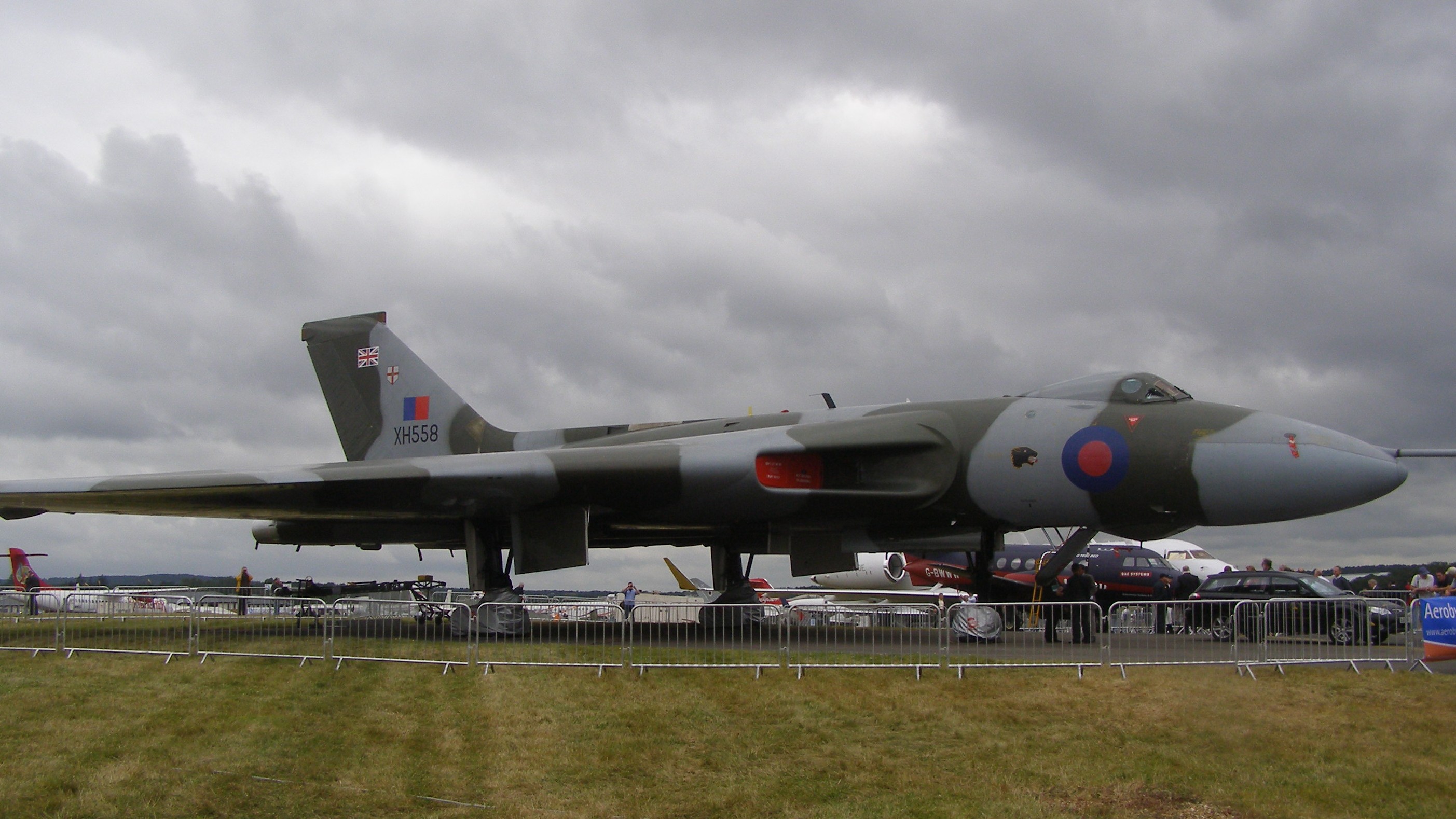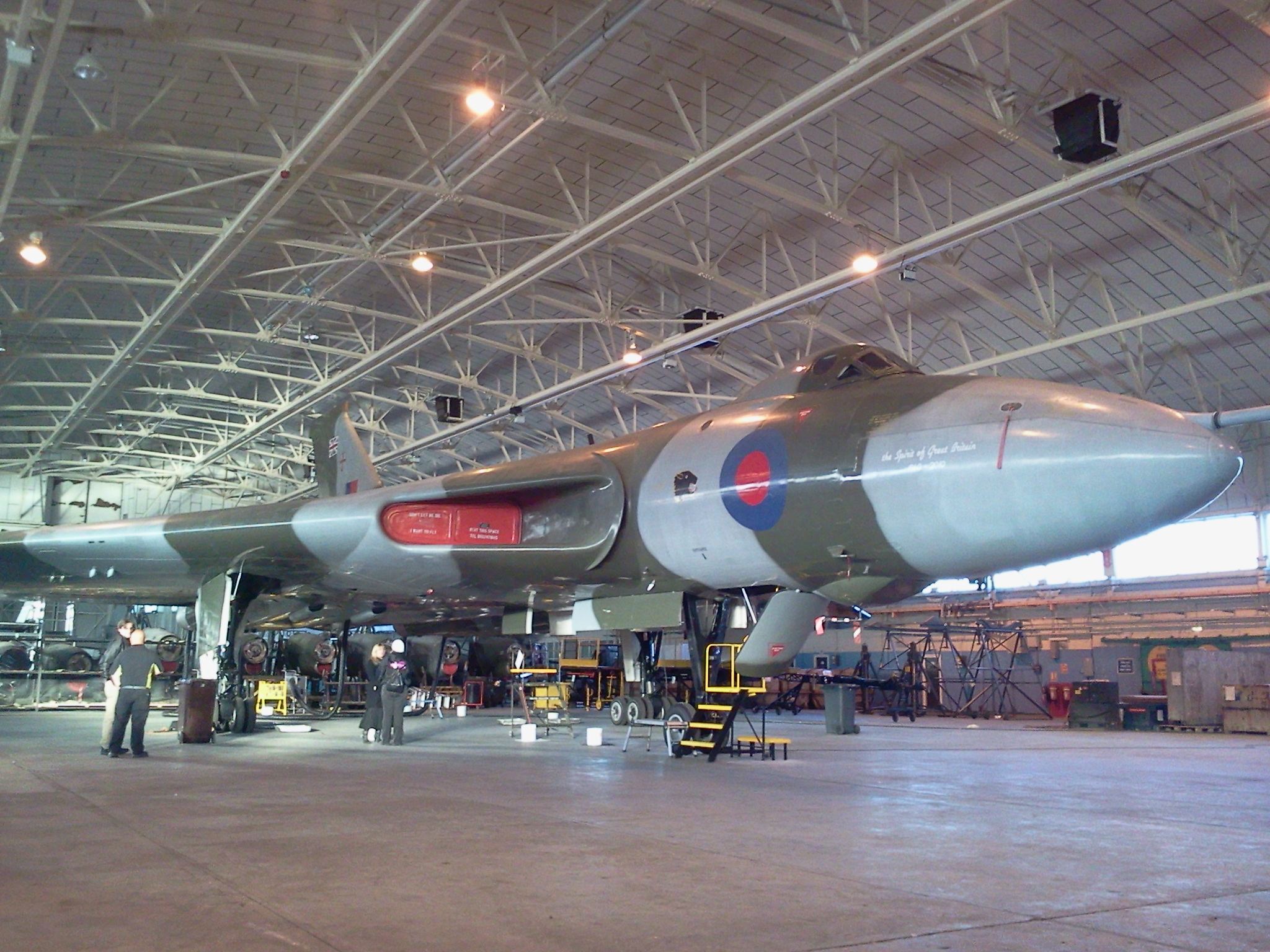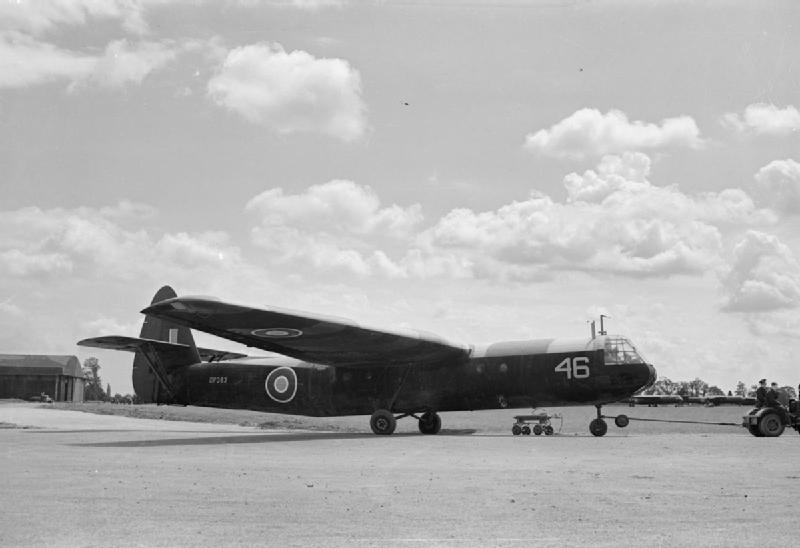|
XH558
Avro Vulcan XH558 ( military serial ''XH558'', civil aircraft registration ''G-VLCN'') ''Spirit of Great Britain'' was the last remaining airworthy example of the 134 Avro Vulcan jet-powered delta winged strategic nuclear bomber aircraft operated by the Royal Air Force during the Cold War. It was the last Vulcan in military service, and the last to fly at all after 1986. It last flew on 28 October 2015."Final Flight report" ''Vulcan To The Sky'', 30 October 2015. Vulcan XH558 first flew in 1960, and was one of the few examples converted for a role in 1973, and then again as an [...More Info...] [...Related Items...] OR: [Wikipedia] [Google] [Baidu] |
Avro Vulcan XH558
Avro Vulcan XH558 (United Kingdom military aircraft serials, military serial ''XH558'', civil aircraft registration ''G-VLCN'') ''Spirit of Great Britain'' was the last remaining airworthy example of the 134 Avro Vulcan jet-powered delta winged strategic nuclear bomber aircraft operated by the Royal Air Force during the Cold War. It was the last Vulcan in military service, and the last to fly at all after 1986. It last flew on 28 October 2015."Final Flight report" ''Vulcan To The Sky'', 30 October 2015. Vulcan XH558 first flew in 1960, and was one of the few examples converted for a maritime reconnaissance role in 1973, and then again as an air-to-air refuelling tanker in 1982. After withdrawal in 1984 it continued with the RAF's Vulcan Display Flight, performing until 1992. [...More Info...] [...Related Items...] OR: [Wikipedia] [Google] [Baidu] |
Avro Vulcan
The Avro Vulcan (later Hawker Siddeley Vulcan from July 1963) is a jet-powered, tailless, delta-wing, high-altitude, strategic bomber, which was operated by the Royal Air Force (RAF) from 1956 until 1984. Aircraft manufacturer A.V. Roe and Company ( Avro) designed the Vulcan in response to Specification B.35/46. Of the three V bombers produced, the Vulcan was considered the most technically advanced, hence the riskiest option. Several reduced-scale aircraft, designated Avro 707s, were produced to test and refine the delta-wing design principles. The Vulcan B.1 was first delivered to the RAF in 1956; deliveries of the improved Vulcan B.2 started in 1960. The B.2 featured more powerful engines, a larger wing, an improved electrical system, and electronic countermeasures, and many were modified to accept the Blue Steel missile. As a part of the V-force, the Vulcan was the backbone of the United Kingdom's airborne nuclear deterrent during much of the Cold War. Although the ... [...More Info...] [...Related Items...] OR: [Wikipedia] [Google] [Baidu] |
List Of Surviving Avro Vulcans
The Avro Vulcan is a British jet-engine strategic bomber operated by the Royal Air Force from 1956 until 1984. Of the 134 production Vulcans built, 19 survive today. None are airworthy, although three (XH558, XL426 and XM655) are in taxiable condition. All but four survivors are located in the United Kingdom. Of the four Vulcans deployed in Operation Black Buck during the Falklands War – XM597, XM598, XM607 and XM612 – all survive today. Surviving aircraft ''All locations are in the United Kingdom, unless otherwise stated.'' References {{Reflist Avro Vulcan The Avro Vulcan (later Hawker Siddeley Vulcan from July 1963) is a jet-powered, tailless, delta-wing, high-altitude, strategic bomber, which was operated by the Royal Air Force (RAF) from 1956 until 1984. Aircraft manufacturer A.V. Roe an ... Avro Vulcan ... [...More Info...] [...Related Items...] OR: [Wikipedia] [Google] [Baidu] |
Doncaster Sheffield Airport
Doncaster Sheffield Airport , formerly named and commonly referred to as Robin Hood Airport, is an unscheduled international airport closed to passenger traffic. The airport is located in Finningley near Doncaster in South Yorkshire, England. The site lies south-east of the centre of Doncaster and east of Sheffield. It opened to passengers in 2005, operated by Peel Airports, a division of The Peel Group. The closed airport has a CAA Public Use Aerodrome Licence that allows flights for the public transport of passengers or for flying instruction. It had 1.22 million passengers in 2018. The airport was one of two commercial international airports in Yorkshire, along with Leeds Bradford Airport. The closure of Doncaster Sheffield Airport was announced in September 2022 after extensive reviews citing a lack of profitability. The last scheduled departure was on 29 October, with inbound flights continuing until 4 November 2022. On 2 November, the airport owner announced an accep ... [...More Info...] [...Related Items...] OR: [Wikipedia] [Google] [Baidu] |
RAF Finningley
Royal Air Force Finningley or RAF Finningley was a Royal Flying Corps and Royal Air Force station at Finningley, in the Metropolitan Borough of Doncaster, South Yorkshire, England. The station straddled the historic county boundaries of both Nottinghamshire and the West Riding of Yorkshire. RAF Finningley was decommissioned in 1996. The airfield was developed into an international airport named Doncaster Sheffield Airport, which opened on 28 April 2005. The closure of the airport was announced in September 2022 with the final passenger flight arriving on 4 November 2022. History Origins During the refurbishment of the Royal Flying Corps station at Doncaster in 1915 a decision was taken to move operations temporarily to an air strip at Bancroft Farm at Finningley. This flight of aircraft is thought to have consisted of Royal Aircraft Factory BE.2c fighters. These fighters were used to intercept Zeppelin bombers approaching Yorkshire cities from the East Coast, in this ... [...More Info...] [...Related Items...] OR: [Wikipedia] [Google] [Baidu] |
Vulcan Display Flight
The Vulcan Display Flight (VDF) was a unit of the Royal Air Force formed in 1984 to continue to perform display flights of the Avro Vulcan bomber, which was withdrawn from active service that same year. It operated XL426 from 1984 to 1986 and XH558 from 1985 to 1993. It was disbanded in 1993, due to defence cuts. History Prior to the formation of the VDF, various Vulcans were publicly displayed by operational RAF squadrons as part of their normal duties. Since the Vulcan had been a popular performer, it was decided after the disbandment of the last operational Vulcan unit, No. 50 Squadron RAF, 50 Squadron, to set up the VDF to continue display flying. The first display, performed using XL426, was for No. 9 Squadron RAF, IX Squadron's Standard Presentation Parade at RAF Honington on 23 May 1984. Over 50 displays were then completed using XL426 for the 1984 season. As a result of budget cuts, it was decided by the Ministry of Defence (United Kingdom), Ministry of Defence to discon ... [...More Info...] [...Related Items...] OR: [Wikipedia] [Google] [Baidu] |
Avro Vulcan XM655
Avro Vulcan XM655 is one of three remaining taxiable Avro Vulcan strategic bombers, the other two being XH558 and XL426. XM655 is currently owned by Wellesbourne Mountford Airfield and has been maintained by the 655 Maintenance & Preservation Society since 1998, who keep the aircraft in a taxiable condition. History XM655 was completed in November 1964 and was the antepenultimate Vulcan to be built. It is the youngest surviving example and the only operable Avro Vulcan with the more powerful Bristol Olympus 301 engines. Commissioned at Cottesmore in 1964, XM655 initially flew with Nos. 9, 12 and 35 Squadrons before moving to the Waddington Wing in 1967 to join Nos. 44, 50 and 101 Squadrons. After service In 1984, XM655 was sold off to businessman Roy Jacobsen of Croydon, who intended to keep it airworthy, but the costs proved prohibitive, and the runway was too short for it to take off, so XM655 was left to deteriorate. Title of XM655 then passed to Radarmoor Ltd, the operati ... [...More Info...] [...Related Items...] OR: [Wikipedia] [Google] [Baidu] |
XL426
Avro Vulcan XL426 is one of three remaining taxiable Avro Vulcan strategic bombers, the other two being XH558 and XM655. It has been owned and maintained by the Southend-on-Sea-based registered charity the Vulcan Restoration Trust since 1993 and carries out regular taxi runs at London Southend Airport. It served with the Royal Air Force from 1962 to 1986. History XL426 was part of the first batch of 24 Avro Vulcans ordered by the Royal Air Force on 25 February 1956. It was built at Avro's Chadderton and Woodford plants, like other Vulcans, and was the 44th of 88 Vulcan B2s built. Its first flight was on 23 August 1962, from Woodford Aerodrome, which lasted 1 hour and 35 minutes. Royal Air Force XL426 entered service with the Royal Air Force on 13 September 1962, initially in 83 Squadron. The aircraft had the pennant of senior RAF commander John Slessor painted on the side of its nose. On 10 September 1963, Slessor flew XL426 from CFB Goose Bay in Labrador, Canada to RAF S ... [...More Info...] [...Related Items...] OR: [Wikipedia] [Google] [Baidu] |
RAF Waddington
Royal Air Force Waddington otherwise known as RAF Waddington is a Royal Air Force (RAF) station located beside the village of Waddington, south of Lincoln, Lincolnshire in England. The station is the RAF's Intelligence Surveillance Target Acquisition and Reconnaissance (ISTAR) hub and is home to a fleet of aircraft composed of the Shadow R1, RC-135W Rivet Joint and operating base for the RAF's MQ-9 Reaper. Since October 2022, it has also been home to the RAF's Aerobatic Team the Red Arrows. History First World War RAF Waddington opened as a Royal Flying Corps flying training station in 1916. Student pilots, including members of the US Army, were taught to fly a variety of aircraft. The station came under the control of the Royal Air Force when it was created on 1 April 1918. It operated until 1920, when the station went into care and maintenance. During and after the First World War, the following squadrons operated from Waddington. * No. 82 Squadron RFC between 30 Mar ... [...More Info...] [...Related Items...] OR: [Wikipedia] [Google] [Baidu] |
Bruntingthorpe Aerodrome
Bruntingthorpe Aerodrome and Proving Ground is a privately-owned former airport near the village of Bruntingthorpe, Leicestershire to the south of Leicester. It was opened as RAF Bruntingthorpe in 1942. History The aerodrome was originally RAF Bruntingthorpe and hosted both the Royal Air Force and the United States Air Force during its life. In 1973 it was sold to Chrysler Motor Corporation, which used it as a vehicle proving ground. In August 1983 it was purchased by C Walton Ltd and it continued in use as a vehicle proving ground and also provided facilities for historic aircraft storage and maintenance, air shows, corporate hospitality, exhibition space, location filming, motorcycle design and development, and vehicle storage and auctions. In 2020 it was sold to Cox Automotive for vehicle storage and auctions, with a part retained by the Walton family for aircraft activities. Current uses Vehicles The site can accommodate about 25,000 vehicles, parked on the former ... [...More Info...] [...Related Items...] OR: [Wikipedia] [Google] [Baidu] |
RAF Brize Norton
Royal Air Force Brize Norton or RAF Brize Norton in Oxfordshire, about west north-west of London, is the largest station of the Royal Air Force. It is close to the village of Brize Norton, and the towns of Carterton and Witney. The station is the base for air transport, air-to-air refuelling and military parachuting, with aircraft operating from the station including the Lockheed C-130 Hercules, Boeing C-17 Globemaster III, Airbus A400M Atlas and Airbus Voyager which replaced the now-decommissioned Vickers VC10 in September 2013 and the Lockheed TriStar in March 2014. Major infrastructure redevelopment began in 2010, ahead of the closure of RAF Lyneham in 2012, and Brize Norton became the sole air point of embarkation for British troops. History Royal Air Force Construction of RAF Brize Norton began in 1935 with the official opening taking place on 13 August 1937. The station was originally to be named RAF Carterton, given its proximity and relationship with the town of ... [...More Info...] [...Related Items...] OR: [Wikipedia] [Google] [Baidu] |







